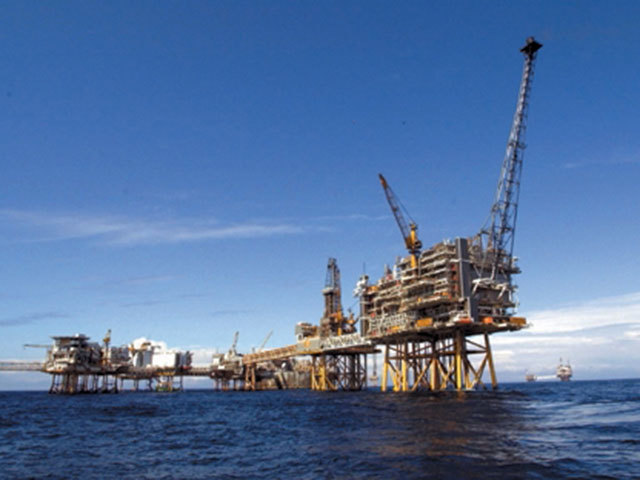
As oil prices keep falling, BP is among Norwegian oil producers having to take a hard look at whether to kill off aging offshore fields earlier than planned because squeezing out the last barrels might not be worth it.
BP is currently deciding on plans for the five fields it operates in Norway in a study to be completed in the first half, said Jan Erik Geirmo, a Stavanger-based spokesman.
“Falling oil prices, lower production and more demanding operations, in addition to significant costs for shutting down and removing old installations and platforms, are continuous challenges that may have an impact on the lifetime of some of our fields,” Geirmo said in an e-mailed reply to questions.
What goes for BP also goes for an industry hit by squeezed margins even as the government demands it meet commitments to keep investing to ensure resources are exploited in full.
Faced with a 40% drop in crude prices since June, costs that have surged for a decade and a surprise tax increase last year, Royal Dutch Shell Plc last month said it may close its Draugen field more than 10 years ahead of target.
Statoil ASA on December 1 delayed plans to pursue development of the Snorre 2040 project and Total SA said December 4 it may postpone spending in the North Sea.
BP’s study started before the latest slump in oil prices, Geirmo said. It includes plans for its two biggest fields, Valhall and Ula, which BP currently expects to keep in operation until 2050 and 2028, respectively.
BP fell as much as 2.9% to 405.10 pence, the lowest since June 2012 and was at 411 pence.
Benchmark Brent crude was trading at $66.67 a barrel.
Such fields underpin an economy that has built the biggest sovereign wealth fund and one of the most generous welfare states, making its people the second richest in Europe.
Shorter life spans for oil and gas projects would shrink state revenues already hit by weaker prices for Norway’s fossil fuel and leave billions of dollars of reserves under the sea.
“If costs stay high and oil prices low going forward, we’ll probably see an acceleration of field shutdowns; that means you lose reserves,” said Ole Njaerheim, head of industry consultant ECON Oil & Gas.
They will be mostly “in fields that have been discovered but not developed, and in finds that will be made and won’t be profitable if a platform isn’t there already.”
The prospect of Norway’s oil riches forever trapped under the North Sea isn’t something the government is entertaining.
“Cost cuts that mean that companies leave profitable resources in the ground are not OK,” State Secretary Kaare Fostervold said by e-mail without indicating what’s an acceptable return.
Yet neither has it forced reconciliation with an industry that wants help to cope with tighter margins. As companies are preparing to cut investments by about 13% in 2015, the Conservative-led government has said they risk losing goodwill if resources that can’t be recovered in future are given up.
At issue when a platform is shut is that the country loses not only barrels in that reservoir but potential nearby finds that are no longer economic without infrastructure in place.
“The situation is serious,” said Erling Kvadsheim, environment and industry policy director at the Norwegian Oil and Gas Association, representing more than 100 companies like BP, Statoil, Shell, ConocoPhillips and Exxon Mobil Corp. (XOM) “It’s difficult to achieve profitability in marginal fields.”
Statoil, operator for more than 70% of Norway’s oil and gas output, said December 1 it had postponed a milestone in the approval schedule of Snorre 2040, designed to extend the life of the field by two decades and boost production by 300 million barrels by adding a platform.
The company says high costs and a tax increase introduced by the previous government last year threaten the profitability of the project, and a broader goal of raising the company’s recovery rate in Norway to 60% from 50% now.
Even before oil prices began their slide from $115 a barrel in June, the Stavanger-based producer cut planned investment and set up a sweeping efficiency program to buoy shareholder returns as costs rise.
Brent crude has fallen to new five-year lows of less than $66 a barrel since the Organization of Petroleum Exporting Countries last month declined to cap a global glut by cutting output.
Statoil may shut the Statfjord field earlier than a planned date of 2025.
ConocoPhillips (COP) and Statoil are also resisting a push by state-owned Petoro AS to extend the life of the Heidrun field to 2045.
Statoil spokesman Oerjan Heradstveit declined to comment on that report. “Time will show,” he said about Statfjord. “The efficiency program will be very important for what happens to these installations.”
Conoco’s Norwegian unit declined to comment, spokesman Stig Kvendseth said.
Exxon, which operates four fields in Norway and is the country’s third-largest producer according to its website, isn’t planning to shorten the life span of any of its projects, said Knut Asp, a Stavanger-based spokesman.
Still, so-called tail production is “very challenging” because of the general cost level and unit costs rising as output dwindles, he said.
The industry lobby, already smarting at tax increases it said threatened drilling on producing fields worth about $11 billion, has urged the government to act on an earlier promise to consider incentives for projects to boost recovery rates.
The response so far has been equivocal.
Finance Minister Siv Jensen said last month there were no plans to alter the petroleum-tax system. On the other hand Finance Ministry State Secretary Joergen Naesje says the earlier commitment to consider changes is still alive.
“We will consider changes that can improve resource management and increase the recovery rate of producing fields and nearby marginal fields,” he said in an e-mail on December 3. “The responsibility for such measures lies primarily with the companies, but authorities will support this important work.”
Recommended for you
